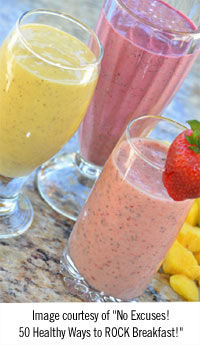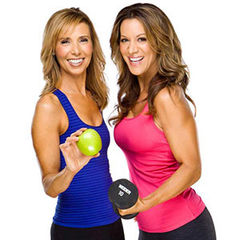Turn off your oven. Shut off the stove. There's no cooking required on the Raw Food diet. Instead of cooking, you'll be spending your time juicing, sprouting and dehydrating your fruits, vegetables, grains, nuts and seeds. While it seems like a good idea to eat a more plant-based diet, if not done properly, a raw food diet can make you feel worse, not better.
Raw foodists believe that enzymes are the life force of a food, helping us to digest food and absorb nutrients. They feel that cooking food above 118 degrees destroys its nutrients and natural enzymes, which can impact our digestive processes and ability to fight diseases.
There are no hard rules about what percentage of the diet must be raw, but usually at least 75 percent of the diet consists of raw food. Most raw foodists are vegan, taking in no animal products at all. However, some consume raw eggs, raw and unpasteurized dairy, raw fish (sashimi, ceviche), and even raw meat and poultry.
Health Benefits of a Raw Food Diet
As this is a mostly plant-centric diet, it contains more fiber and antioxidants and less saturated fat, sodium and sugar than the typical American diet. There are rarely processed foods or artificial ingredients. Most foods are organic. Such a diet can reduce the risk for heart disease and stroke by reducing blood pressure, lipid levels (cholesterol, LDL, triglycerides) and body weight. Many people lose weight on a raw diet, as their overall caloric intake can be slashed almost in half compared to what they were previously eating.
Because certain nutrients are diminished or destroyed by cooking, keeping them in a raw or almost raw state (under 118 degrees) preserves their nutrient status. For example, the level of sulforaphane, a powerful cancer-fighting phytochemical found in broccoli, in food is significantly reduced after cooking. Additionally, vitamins B and C can also be destroyed by heat, particularly because most people overcook or boil out the nutrients when preparing vegetables.
However, cooking actually makes some nutrients more bioavailable. Lycopene, a red carotenoid pigment found in tomatoes, and beta-carotene, found in carrots, butternut squash and sweet potatoes, are actually better absorbed after cooking, and even more so when consumed in the presence of a little healthy fat, such as olive oil or avocado.
What you Eat on a Raw Food Diet
Following a raw food diet means eating a lot of fruits and vegetables, as well as nuts, seeds, grains and beans. Additionally, milk from a young coconut, seaweed, and sun-dried or dehydrated fruits are allowed. Sprouted grains and beans are consumed, as opposed to the cooked whole grain or bean. Nuts and seeds are often soaked and eaten as is or blended to make nut milks or a cheese-like product. Dehydrators can be used on fruits and vegetables, as well as to make crackers from pastes made from soaked nuts and seeds. Dehydrators are permitted as they blow hot air (never greater than 116 degrees) around the food. Juicers and blenders are also important tools in the raw food kitchen.
What's the Downside to Eating a Raw Food Diet?
Diets that limit or avoid dairy and animal protein are usually lower in protein and lack vitamins B12 and D, as well as the minerals calcium and iron. Supplements of these nutrients are recommended. In addition, uncooked and unpasteurized foods can contain bacteria, parasites and viruses, many of which would be destroyed during the cooking process. Be extra careful with risky foods such as sprouts, raspberries, unpasteurized juices and milk, and raw fish and meat.
Due to the risk of food poisoning, a raw food diet isn't recommended for pregnant women, young children, seniors, people with weak immune systems, and those with chronic medical conditions like kidney disease.
Raw food diets can also be very expensive, especially if one has to purchase equipment like dehydrators, juices and blenders. Plus, the prep time can be very time-consuming. Sprouting and dehydrating are both lengthy processes; however, blending a smoothie or making a salad take much less time. Shopping for items such as grains and seeds might require a trip to a specialty market, and organic produce usually costs more than conventionally grown produce. Dining out is very difficult, unless you have a raw food restaurant in your area.
The Bottom Line
Increasing your consumption of fruits, vegetables, nuts, seeds and grains will provide your body with important vitamins, minerals, antioxidants and fibers that can reduce inflammation and lower your risk for heart disease, diabetes, cancer and obesity. A combination of raw and cooked food can provide you with balanced nutrition and decrease risk of food-borne illness.
RAW FOOD RECIPE

Makes 1 serving - Ready in 5 minutes
Ingredients:
- 1 cup tart cherry juice
- 1 cup mixed organic berries (strawberries, raspberries, blackberries)
- 1 Tbsp. chia seed
- 1 scoop raw protein powder
- Ice
Place all ingredients into a blender and blend until smooth. Add enough ice to reach desired consistency.
Nutrients per serving: 301 calories, 4.5 g fat, 43.5 g carbohydrates, 9.3 g fiber, 24.3 g protein




 by
by 








 by
by